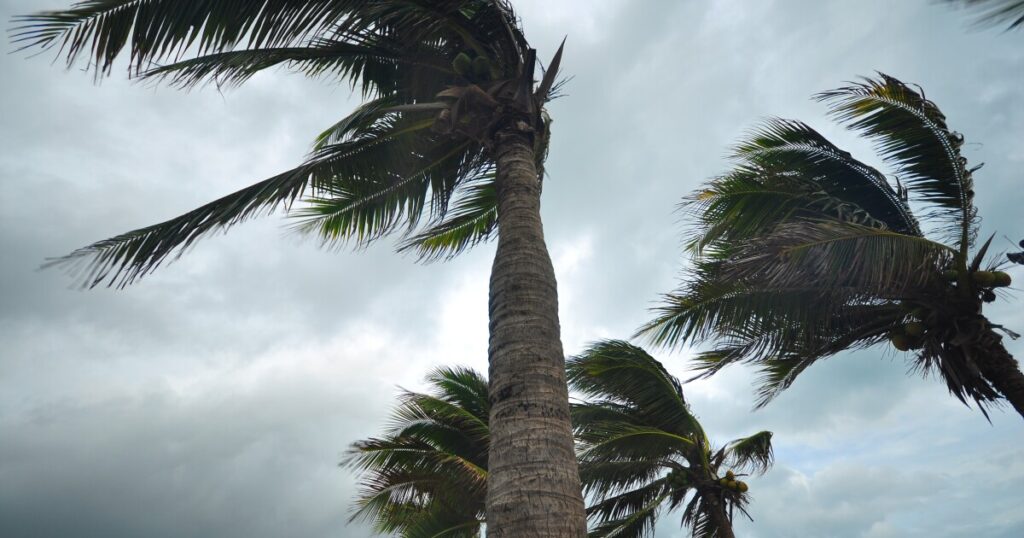As climate catastrophes increase, here's how employers can prep for hurricane season

The effects of climate change have led to an increase in natural disasters. Hurricanes, one of the costliest natural catastrophes, are only becoming stronger and more frequent — can employers protect their businesses against the inevitable?
Hurricane season is well underway, lasting from June 1 to November 30, with affected regions including all of the Atlantic and Gulf of Mexico coastal areas, Puerto Rico, U.S. Virgin Islands, Hawaii, parts of the Southwest and the Pacific coast. And while the National Oceanic and Atmospheric Administration (NOOA) predicts a near-normal hurricane season, that still means it forecasts one to four major hurricanes, with winds of 111 miles per hour or more. However, most researchers predict that “normal” hurricane seasons are likely a thing of the past.
According to the Environmental Defense Fund, the most damaging kinds of U.S. hurricanes are three times more common than they were three years ago. On top of that, alongside tropical cyclones, hurricanes are the costliest natural disasters, in both monetary costs and loss of human life, accounting for $1.2 trillion since 1980, according to the National Centers for Environmental Information.
Read more: Benevity launches a climate kit to give employers actionable resources
While employers can minimize the damage done to their business and employees, they can’t wait for tragedy to strike, says Madeleine Catzaras, head of environmental, social and governance people solutions and solutions development at Aon, a global management consulting firm.
“Go from reactive to proactive,” says Catzaras. “There will be a significant impact on businesses because of the toll [hurricanes] take on humans. So the question is: How do we support our employees and their families in face of these events that are increasing in intensity.”
While many employers may center their hurricane preparation around insuring their physical assets, if employees are unable to return to work or choose not to return due to how their employer treated them in their time of need, then businesses will have a long-term disruption on their hands. This is where DEI comes into play, explains Raph Vallet, head of Solutions and Innovation for Aon Climate.
Read more: This platform is helping employers normalize grief at work
“Natural disasters have a disproportionate effect on those living in developed countries as well as those of different class backgrounds,” says Vallet. “Employers need to think critically about their diversity and equity agenda and how it intersects with climate change.”
Catzaras advises employers to identify their vulnerable populations — know how many employees live in affected regions on the coasts and come from low-income communities where there is less education and resources available to them. Notably, low-income neighborhoods are more likely to have poor infrastructure and are more susceptible to floods, while also being in areas closer to industrial facilities, where chemical spills and toxic leaks are more likely to occur. Black, Hispanic and Indigenous people are more likely to live in these communities than their white counterparts.
According to the Urban Institute, regardless of income, Black households are 1.5 times more likely to be exposed to environmental hazards. The Institute for Child, Youth and Family Policy at Brandeis University found that most white children live in high-opportunity neighborhoods, or communities that offer the highest chance of upward class mobility, while most Black and Hispanic children live in low-opportunity neighborhoods. In other words, the impact of natural disasters is also an equity issue.
Read more: The impact of trauma on the workplace: How employers can support recovery
“Employers should be thinking about how to proactively protect their employees and consider this question around duty of care,” says Catzaras. “Because how employers react reflects on their overall approach to climate change as well as equity and the attraction and retention of talent.”
Catzaras and Vallet emphasize that employers owe it to their workforce to educate them on hurricane preparedness and offer financial resources to those impacted by the hurricane. Employers should also be prepared for employees to take leave to deal with loss, injuries and mental health challenges, and consider how their policies and benefits may potentially restrict an employee from seeking the help they need. Ultimately, employee safety should come first, underlines Catzaras. If it doesn’t, employers won’t have an engaged and productive workforce.
“There’s no such thing as a good plan if you don’t include people,” says Vallet. “There’s no such thing as a business that doesn’t rely on the skills of people.”
Read more: Sustainability meets financial wellness: A look at carbon savings accounts
On the other hand, Catzaras reminds employers to do their part in the fight against climate change.
“This is the decade of action — everything we do before 2030 to transform to more sustainable models helps mitigate the worst impact of climate change,” she says. “It doesn’t have to get worse.”







